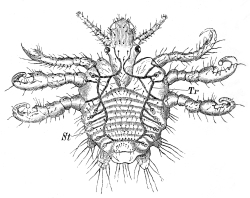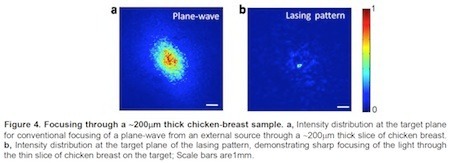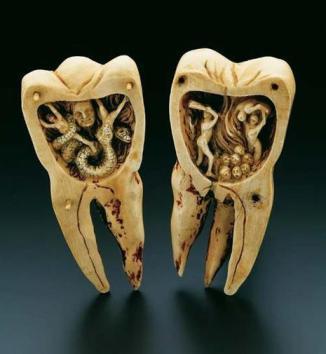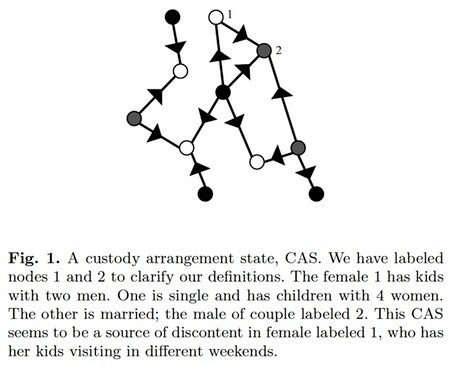Marc Abrahams's Blog, page 433
January 10, 2014
Fear and Loathing of the English Passive
A new study has been written. It has been published online. Pedants of the future will have had the opportunity to know of it:
“Fear and Loathing of the English Passive,” Geoffrey K. Pullum, epub January 10, 2014, to appear in Language and Communication, 2014. (Thanks to Rosie Mestel for having brought this to our attention.) The author, at the University of Edinburgh, explains:
“Writing advisers have been condemning the English passive since the early 20th century. I provide an informal but comprehensive syntactic description of passive clauses in English, and then exhibit numerous published examples of incompetent criticism in which critics reveal that they cannot tell passives from actives. Some seem to confuse the grammatical concept with a rhetorical one involving inadequate attribution of agency or responsibility, but not all examples are thus explained. The specific stylistic charges leveled against the passive are entirely baseless. The evidence demonstrates an extraordinary level of grammatical ignorance among educated English language critics.”
BONUS: An unrelated work by the same author:
“SCOOPING THE LOOP SNOOPER: A proof that the Halting Problem is undecidable,” Geoffrey K. Pullum, Mathematics Magazine, vol.73, no. 4, 2000, pp. 319–320
BONUS: Some background on the halting problem

January 6, 2014
The quest for the elusive tooth worm(s)
The Chirurgeon’s Apprentice blog discusses “the battle of the tooth worm“:
This is a depiction of the infamous tooth worm believed by many people in the past to bore holes in human teeth and cause toothaches….Tooth worms have a long history, first appearing in a Sumerian text around 5,000 BC. References to tooth worms can be found in China, Egypt and India long before the belief finally takes root (pun intended) into Western Europe in the 8th century…. Treatment of tooth worms varied depending on the severity of the patient’s pain…. Some tooth-pullers mistook nerves for tooth worms, and extracted both the tooth and the nerve in what was certainly an extremely painful procedure in a period before anaesthetics….
W. E. Gerabek, ‘The Tooth-Worm: Historical Aspects of a Popular Belief,’ Clinical Oral Investigations (April 1999): pp. 1-6.
Leo Kanner, Folklore of the Teeth (1928).
(Thanks to investigator Ivan Oransky for bringing this to our attention.)
BONUS (unrelated): ”Modeling Propagation Dynamics of Bluetooth Worms,” Guanhua Yan, Stephan Eidenbenz, International Conference on Distributed Computing Systems – ICDCS , pp. 42-42, 2007.

Lying — what is it, truly?

 Perhaps it’s not all that widely appreciated that many philosophers have serious problems with lying. For it seems that despite the rampant ubiquity of lying, there isn’t as yet a general agreement amongst philosophers as to exactly what it is. As the authors of a new paper in the journal Philosophical Psychology point out : “… a number of philosophers have proposed several different and incompatible definitions of lying.” Perhaps what’s needed is an empirical investigation into the concept of lying – and just such an undertaking has been undertaken by Dr. Adam J. Arico and professor Don T. Fallis from the University of Arizona, US. It’s entitled: ‘Lies, damned lies, and statistics: An empirical investigation of the concept of lying’. Their two-part experimental study involved the participation of more than 200 students from the university, who were exposed to vignette scenarios of truth and lies. Thus, the implications of bald-faced lies, proviso lies, straight-forward lies, and confused lies were examined. But, disappointingly perhaps for those who were expecting a new watertight definition, the study doesn’t go so far as to provide one – noting that further empirical studies are needed before that becomes, from a philosophical point of view, a reality.
Perhaps it’s not all that widely appreciated that many philosophers have serious problems with lying. For it seems that despite the rampant ubiquity of lying, there isn’t as yet a general agreement amongst philosophers as to exactly what it is. As the authors of a new paper in the journal Philosophical Psychology point out : “… a number of philosophers have proposed several different and incompatible definitions of lying.” Perhaps what’s needed is an empirical investigation into the concept of lying – and just such an undertaking has been undertaken by Dr. Adam J. Arico and professor Don T. Fallis from the University of Arizona, US. It’s entitled: ‘Lies, damned lies, and statistics: An empirical investigation of the concept of lying’. Their two-part experimental study involved the participation of more than 200 students from the university, who were exposed to vignette scenarios of truth and lies. Thus, the implications of bald-faced lies, proviso lies, straight-forward lies, and confused lies were examined. But, disappointingly perhaps for those who were expecting a new watertight definition, the study doesn’t go so far as to provide one – noting that further empirical studies are needed before that becomes, from a philosophical point of view, a reality.
Extras:
● Some of the lies which were used in the study are available here.
● Here’s Ricky (The Office) Gervais explaining the plot of his alternative-reality comedy film ‘The Invention of Lying’.
● And here’s a sample of the result
● Also don’t miss: The Truth Goggles from Dan Schultz (MIT) Which will be available here (when it’s finished).

The past and further adventures of Troy Hurtubise (of grizzly fame) (Part 2 of 3)
Ig Nobel Prize winner Troy Hurtubise explains in exquisite detail why and how he has spent 25 years building and testing a suit of armor to protect himself against grizzly bears. Vice presents a three-part interview with Troy. Yesterday we enjoyed part 1.
Here’s part 2, about how Troy has been adapting his anti-grizzly-bear technology to protect military personnel:
BONUS (from 2011): Troy’s New Book of Bear (and then some) Adventures

Robot orchestra acquires clothingless humans
One of Belgium’s most renowned robot orchestras has acquired the use of several naked persons. The orchestra, sans naked persons, was written up a few years ago in a study:
“The Man and Machine Robot Orchestra at Logos,” Laura Maes, Godfried-Willem Raes and Troy Rogers, Computer Music Journal, 35:4, pp. 28–48, Winter 2011. The authors, at the University College Ghent, Belgium and the University of Virginia, explain: ”This article provides an overview of the various automata of the Man and Machine robot orchestra found at the Logos Foundation in Ghent, Belgium. The motivation for their creation is discussed, as well as the way in which these automations of existing and new instruments distinguish themselves from precursors and other contemporary musical robots. This extensive orchestra features over 45 organ-like instruments, monophonic wind instruments, string instruments, percussion instruments, and noise generators.”
This video shows one small part of the orchestra, with a performer who is not without clothing:
Now the Logos Foundation’s web site presents descriptions, photos, and videos of the orchestra, which is no longer always devoid of naked persons. This video shows some of that:
(HT Clifford Pickover)

January 5, 2014
The past and further adventures of Troy Hurtubise (of grizzly) (Part 1 of 3)
Ig Nobel Prize winner Troy Hurtubise explains in exquisite detail why and how he has spent 25 years building and testing a suit of armor to protect himself against grizzly bears. Vice presents a three-part interview with Troy.
Here’s part 1, about his grizzly bear work:
BONUS (from 2001): When Troy Met a Kodiak Bear
BONUS: Troy demonstrates that he, like a bear, can eat ants:
PS. Yes—and sorry!—there is a typo in the headline of this blog item. It should say “…of grizzly fame”

A Brief History of Fridge Magnets [video]
The Tripe Marketing Board presents A Brief History of Fridge Magnets:
BONUS: The history continues past that point, of course. Part of it is documented in this study:
“Design, manufacture, and test of an adiabatic demagnetization Refrigerator Magnet for use in space,” Steve Milward, Stephen Harrison, Robin Stafford Allen, Ian D. Hepburn, Christine Brockley-Blatt [pictured here], IEEE Transactions on Applied Superconductivity, vol. 15, no. 2, pp. 1477-1479, 2005. The authors explain:
“The proposed European Space Agency (ESA) XEUS mission will use an adiabatic demagnetization refrigeration (ADR) system to cool X-ray detectors to a temperature of less than 0.1 K. The superconducting magnet for the flight standard prototype is currently under construction by Space Cryomagnetics Ltd of Culham, England. The magnet is subject to tight constraints on its mass, stray field, and power consumption. This paper describes the design, manufacture and test of the magnet.”

January 4, 2014
The trucker, his family and their pubic lice
 Recent medical reports of pubic lice infestations are rare, but here we share a novelty, published in Tropical Biomedicine 30(1): 152–154 [First report of family infestation with pubic louse (Pthirus pubis; Insecta: Anoplura: Pthiridae) in Iran – a case report]. The authors, R. Dehghani, M. Limoee, and A.R. Ahaki, from Kashan and Kermanshah Universities of Medical Sciences, Iran, report:
Recent medical reports of pubic lice infestations are rare, but here we share a novelty, published in Tropical Biomedicine 30(1): 152–154 [First report of family infestation with pubic louse (Pthirus pubis; Insecta: Anoplura: Pthiridae) in Iran – a case report]. The authors, R. Dehghani, M. Limoee, and A.R. Ahaki, from Kashan and Kermanshah Universities of Medical Sciences, Iran, report:
Pubic louse are transmitted during sexual contact in adults. Thus, infestation of children with pubis [sic!] louse is very rare. A case of infestation with pubic louse (P. pubis) in a family including parents and two children, in Kashan, Isfahan province was seen. On examination of mother and children’s eyelashes, as well as, father’s chest and eyelash, the parasites were seen and collected. [ … ] Father was a 35 years old trucker, mother was a 28 years old housekeeper and two children, a 4 years old boy and a 5.5 years old girl. The children did not attend kindegarten [sic!] yet.
About the significance of the case and the source of the parasites they write:
In our country many infested people with pubic louse do not seek medical help due to ethical and cultural restrictions, thus there is very little information on pubic louse infestation, [ … ] Hence, this article could be the first report on the familial infestation with P. pubis in Iran. [ … ] An interview with the father of this family indicated that, the louse have been transmitted from him to the wife and the children due to close contact between them and their mother.
Thanks to Erwin Kompanje for bringing this to our attention.

Physicists try to analyze child custody
A team of physicists and mathematicians attempted to apply their physics knowledge to understanding how divorced couples can better deal with custody of the children:
“The physics of custody,” Andres Gombero, Victor Munoz and Pierre Paul Romagnoli, arXiv:1305.0935v3, December 19, 2013. (Thanks to investigator Judith Weaver for bringing this to our attention.) The authors, at Universidad Andres Bello and Universidad de Chile, Santiago, Chile, explain:
“The use of techniques borrowed from mathematics and physics in tackling problems of social sciences has a long history…. Divorced individuals face complex situations when they have children with different ex-partners, or even more, when their new partners have children of their own. In such cases, and when kids spend every other weekend with each parent, a practical problem emerges: Is it possible to have such a custody arrangement that every couple has either all of the kids together or no kids at all? We show that in general, it is not possible, but that the number of couples that do can be maximized. The problem turns out to be equivalent to finding the ground state of a spin glass system, which is known to be equivalent to what is called a weighted max-cut problem in graph theory, and hence it is NP-Complete.”
Here’s detail from the study:

Perfecting the Schnitzel-Laser
Moti Fridman alerted us to the existence of the schnitzel-laser. Fridman wrote: ”They showed how a laser can find by itself the correct phase to lase at in order to go through a thin chicken breast with no aberrations, when it is put inside the cavity. In a talk they called it the schnitzel-laser. This research shows beautifully the principle of operation of lasers to many people outside of the laser community.” The researchers published a study about it:
“Real-time wavefront-shaping through scattering media by all optical feedback,” Micha Nixon, Ori Katz, Eran Small, Yaron Bromberg, Asher A. Friesem, Yaron Silberberg, and Nir Davidson [pictured here], arXiv preprint arXiv:1303.3161 (2013). The authors report:
“we applied our technique to focus light through a thin scattering biological sample. Specifically, we replaced the diffuser with a slice of approximately 200μm thick chicken breast in water and Glycerol solution, placed between two microscopes slides. As with the optical diffuser, the light of an incident focused plane-wave was scattered to a random speckle pattern without a noticeable ballistic component (Fig .4a). However, the lasing intensity pattern maintained an effective tight focus through the scattering tissue on the target (Fig. 4b)…. We have demonstrated an all-optical technique for wavefront-shaping, focusing light through highly scattering media at unprecedented speeds, without requiring the use of adaptive algorithms, SLMs, or electronic feedback.”

BONUS: Video of a fellow named Nicko demonstrating how he makes chicken schnitzel. His method includes the playing of annoying music:
BONUS: A recipe for Chicken Schnitzel with Zigeuner Sauce

Marc Abrahams's Blog
- Marc Abrahams's profile
- 14 followers





